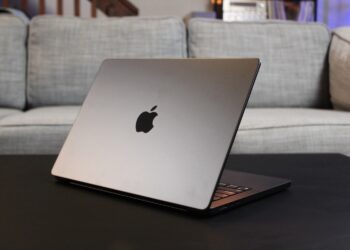When using a Mac, you may encounter issues with third-party devices when your computer goes to sleep. This problem has been around for a while, particularly affecting users of Energy Saver settings. Here’s a simple guide to help you troubleshoot and resolve the issues with your peripherals and Mac’s sleep mode.
Step 1: Check Your Energy Saver Settings
-
Open System Settings or Preferences: Click the Apple logo in the upper left corner of your screen.
- For macOS Ventura and later, select System Settings.
- For macOS Monterey and earlier, choose System Preferences.
-
Find the Energy Saver Option: Look for the Power, Energy Saver, or Sleep settings.
ADVERTISEMENT - Look for the Checkbox: Within these settings, there’s an option labeled Put hard drives to sleep when possible. Make sure this box is checked. When enabled, this setting may affect the power of all peripheral ports during the computer’s sleep, including when it’s in clamshell mode (using your Mac with the lid closed and an external display).
Step 2: Understand Clamshell Mode
Clamshell mode allows you to use your Mac with its lid closed, provided you have it connected to an external display. It’s great for conserving space but can introduce complications with your USB devices and docking stations during sleep.
Step 3: Be Cautious with USB Devices
USB devices powered solely by your Mac can sometimes fail to wake up properly after the computer goes to sleep. This could result in your machine freezing or even restarting due to a kernel panic.
- Check Your Cables: Some users have experienced issues with Thunderbolt 5 devices. Remember, Thunderbolt 3 and later versions share USB buses, so they can experience similar problems when connected.
Step 4: Update Device Firmware
Many connectivity issues arise from outdated firmware in your third-party devices.
-
Check with the Manufacturer: Firmware updates may only be available through Windows when connected to the device, so reach out to the manufacturer for assistance.
- Communicate Needs: When purchasing devices that might have these issues, let the manufacturer know that you might require firmware updates to fix connectivity problems.
Step 5: Testing with Different Devices
In my experience, I’ve encountered similar issues across different devices and operating systems.
- For example, my HP 840 G10 Notebook struggled to send video signals to an external display through a G5 USB docking station after upgrading to Windows 11. However, when I connected the same laptop to a Dell WD-15 docking station, it worked perfectly with HDMI.
Summary of Findings
- Older Firmware Issues: Both docking stations (Dell WD-15 and HP G5) had difficulty communicating with external displays when using older firmware.
- Updating Firmware: After updating to the latest firmware on the Dell docking station, it seamlessly connected to external displays.
- Different Results with Operating Systems:
- HP 840 G10 + HP G5 Dock + Windows 10: HDMI worked.
- HP 840 G10 + HP G5 Dock + Windows 11: HDMI did not work.
- HP 840 G10 + Dell WD-15 Dock + Windows 11: HDMI worked.
Keep Exploring Solutions
If you’re still having trouble after trying the above steps, consider reaching out to tech support for your devices or searching online forums for more tailored advice. Ensuring your devices and systems are updated will significantly improve connectivity and functionality.
By following these guidelines, you can help reduce the chance of encountering issues with your Mac and its connected devices during sleep mode.





